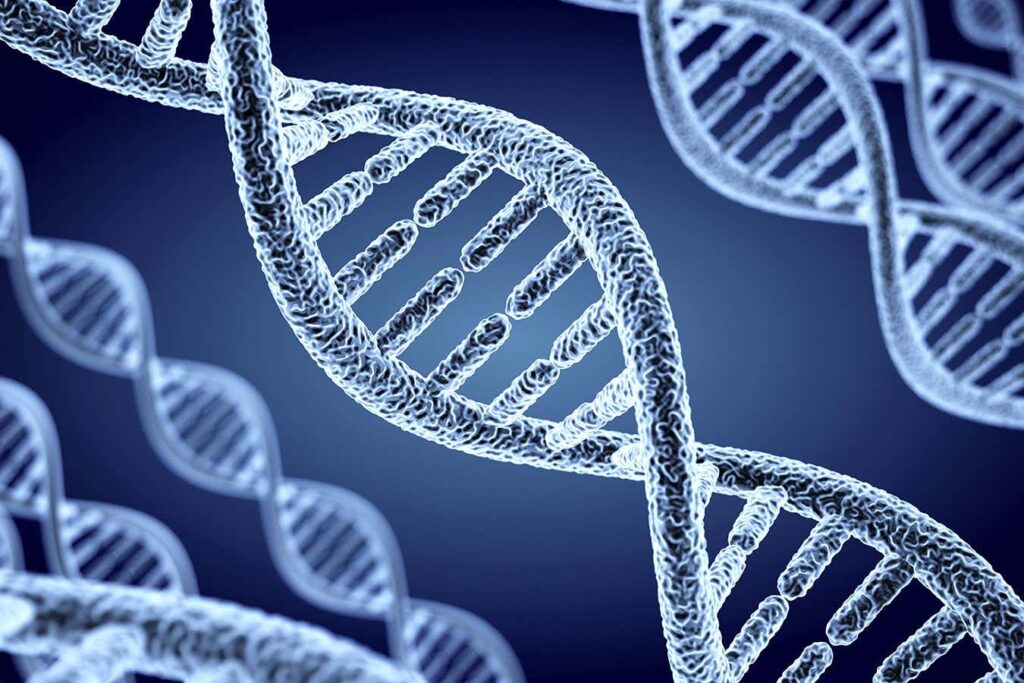
DNA’s strong bonds can act as a glue to make nanoparticles into sturdy materials
Vladislav Kochelaevskiy/Alamy
A material made from hollow nanoparticles and DNA is exceptionally strong, especially considering how small its building blocks are. It could eventually be used to build extremely sturdy medical and electronic devices.
To make this super strong material, Horacio Espinosa at Northwestern University in Illinois and his colleagues started with particles made from metals like gold and platinum, each about 100 nanometres in size. Some were shaped like solid or hollow cubes with flattened corners, while others formed just the edges of a cube.
The best way to ensure that a material has the properties you want is to assemble it from scratch, one building block at a time. However, these nanoparticles were so tiny that assembling them was a challenge. So, the researchers looked to DNA to act as a kind of glue.
They attached carefully synthesised molecules of DNA to the nanoparticles. Then, when they mixed them, the bits of DNA that naturally were attracted each other bonded chemically, making the nanoparticles stick together and form a material.
The researchers varied the shapes of the nanoparticle to build materials with different properties, which they tested by putting them under pressure. They found that using mesh-like nanoparticles produced the substance with the highest strength and stiffness.
For instance, it was stronger than a conventionally-manufactured material that was made from nickel using building blocks ten times larger – and, it could withstand ten times as much pressure as a nickel-based material made from solid nanoparticles. Smaller particles typically make for stronger materials, such tiny components are not very amenable to standard manufacturing practices.
Xiaoxing Xia at the Lawrence Livermore National Laboratory in California says that using DNA provides “an additional knob to control the interaction between the nanocrystal building blocks”, which could enable scientists to create large, ordered materials whose properties can be controlled by manipulating their structure.
This could lead to advances in electronics, medical devices or even transportation, where light but strong materials are important for reducing emissions and boosting sustainability, says Espinosa. “In this study we reported only a tiny fraction of the many materials that can be made using DNA-directed assembly. Investigating many other combinations of constituents and architectures is high on our research wish list,” he says.
Topics:


